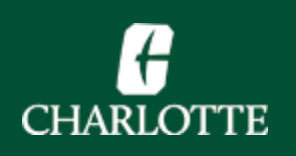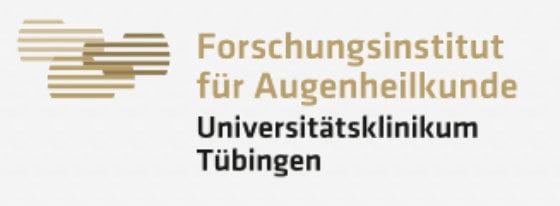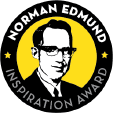

 America — $10,000 in Products
America — $10,000 in Products
University of North Carolina - Charlotte, USA – submitted by Nathaniel Fried
For the use of an IR beam expander and IR lenses to enlarge, collimate, and focus the beam from a Thulium fiber laser into small, flexible, 50-micrometer-core, optical fibers, for fragmenting kidney stones.
Kidney stone disease affects approximately 10% of the U.S. population, and its prevalence is increasing due in part to epidemics of obesity, diabetes, and climate change. The solid-state Holmium:YAG laser has been used in the clinic for lithotripsy for the past 30 years. However, the Thulium fiber laser offers several advantages, including faster stone ablation rates, less stone retropulsion, less fiber burn-back, and an improved spatial beam profile for coupling into smaller and more flexible optical fibers (50 micrometer core fibers) compared to the Holmium laser (200 micrometer core fibers). Smaller and more flexible fibers consume less space in the working channel of the flexible endoscope used to deliver the laser fiber inside the urinary tract. The air-cooled Thulium fiber laser is also more compact, quieter, and less expensive than the water-cooled Holmium laser.

 Europe — €8,000 in Products
Europe — €8,000 in Products
Institute for Ophthalmic Research, Tuebingen, Germany – submitted by Miriam Reh and Christina Schwarz
For early detection of retinal degeneration processes, these projects focus on the development of a 2-photon adaptive optics ophthalmoscope for detecting retinal diseases at an early stage to allow proper treatment - one in in-vivo, and the other in ex-vivo environments.

 Americas — $7,500 in Products
Americas — $7,500 in Products
Universidad de Guadalajara, Mexico – submitted by Roberto Carlos Barragán Campos
For a system to measure the heating value of vegetation employing the absorption of cellulose and thermal difference.
The heating value of vegetation species is valuable information to estimate the hazard of beginning and spreading forest fires. A traditional measure method is utilized to evaluate this parameter and consists in collecting, drying, and grinding a group of leaves. Afterward, a calorimetric bomb generates an adiabatic process to measure the heating value. This method takes around 12 hours to complete. This system proposes a new approach to measure the heating value of vegetation by optics methods. The procedure uses the specific optical absorption of cellulose, hemicellulose, and lignin to generate a thermal difference on the surface of a single leaf. The measurement only requires the optical power absorption to determine the increase of the temperature and estimate the heating value of the sample, decreasing the time-per-measurement to a few minutes.

 Europe — €5,000 in Products
Europe — €5,000 in Products
University of Cambridge, United Kingdom – submitted by Michaela Taylor-Williams
For the setup of a novel multispectral fluorescent in-vitro and in-vivo imaging system to develop tissue-engineered oesophagi for transplantation into infants, without the risk of tissue rejection.

 Americas — $5,000 in Products
Americas — $5,000 in Products
University of Victoria, Canada – submitted by Dennis Hore
For the development of a portable, low-cost, real-time analysis platform for street drugs, coupled with integrated harm-reduction messaging. The goal is for this platform to be deployed in communities without the need for an experienced technician to interpret the data.
Drug checking technologies enable people who use drugs (PWUD) to obtain complete information on the composition of substances and, ideally, the potency of the active components of drug mixtures. This knowledge empowers PWUD to make informed decisions that are potentially lifesaving in the context of an unregulated illicit drug supply. Barriers to accessing such a service include lack of available testing technologies outside urban areas, and stigma associated with drug use that prevents wide-spread testing. The goal is to create a low-cost, AI-driven platform that can be utilized at harm-reduction centers without the need for a trained technician. The device will also provide data to inform local communities of what is circulating in their regions.

 Europe — €3,000 in Products
Europe — €3,000 in Products
University of Complutense , Madrid, Spain – submitted by Ya Jie Knöbl
For the development of a miniaturized fiber and filter-based sensing device that measures the PH value of surface water bodies. Depending on molecule luminescence lifetime, the level of water pH and pollution can be measured to maintain a cleaner environment.

The Norman Edmund Inspiration Award is awarded to the program that best embodies the legacy of Edmund Optics' founder Norman Edmund.
BMCC - CUNY, USA – submitted by Jamal Ali
This project intends to investigate the optical properties of human gray matter in the cerebral cortex of human brains, imaging structural changes and neuron density using noninvasive innovative NIR optical imaging techniques.
In this project, young students from high schools and CUNY colleges will be involved in taking measurements and participating in the photonics techniques. The goal is to introduce the students to long-term experiments that require a lot of work, planning, and to do their work independently. It is simply educating students to get them ready to lead very advanced research in colleges and careers. I have students who I trained for a year or two and they are now pursuing research in physics and engineering at Princeton & MIT. They emailed me back and told me that the research they did with me inspired them to pursue research in their field. From my experience, students enjoy photonics research and they have strong interest and curiosity to explore photonics techniques. They want to help other people with brain diseases and to be part of the magnificent future.
Berea College, United States, submitted by Troy Messina
BMCC - CUNY, United States, submitted by Jamal Ali
Massachusetts Institute of Technology, United States, submitted by Emily Qiu
MIT Wallace Astrophysical Observatory, United States, submitted by Tim Brothers
Philadelphia College of Osteopathic Medicine - Philadelphia, United States, submitted by Eleonora Savio Galimberti
San José State University, United States, submitted by Christopher Smallwood
Temple University, United States, submitted by Chetan Patil
The Ohio State University, United States, submitted by Md Mohsinur Rahman Adnan
Universidad de Guadalajara, Mexico, submitted by Roberto Carlos Barragán Campos
University of Arizona, United States, submitted by Justina Bonaventura
University of Missouri - St. Louis, United States, submitted by Tareq Nabhan
University of North Carolina - Charlotte, United States, submitted by Anteneh Tsegaye
University of North Carolina - Charlotte, United States, submitted by Nathaniel Fried
University of Victoria, Canada, submitted by Dennis Hore
Washington University School of Medicine, United States, submitted by Arash Darafsheh
Erasmus University Medical Center, Netherlands, submitted by Hamed Abbasi
Institute for Ophthalmic Research Tuebingen, Germany, submitted by Christina Schwarz
Institute for Ophthalmic Research Tuebingen, Germany, submitted by Miriam Reh
Institute of Science and Technology Austria, Austria, submitted by Dmytro Rak
Koç Üniversitesi, Turkey, submitted by Mehmet Cengiz Onbasli
Max Planck Institute for Neurobiology of Behavior - Caesar, Germany, submitted by Monika Scholz
Sapienza University of Rome, Italy, submitted by Claudio Paris
Trier University of Applied Sciences, Germany, submitted by Christopher Petry
University of Birmingham, United Kingdom, submitted by Adam Seedat
University of Cambridge, United Kingdom, submitted by Michaela Taylor-Williams
University of Complutense Madrid, Spain, submitted by Ya Jie Knöbl
University of Eastern Finland, Finland, submitted by Kirsi Ikonen
University of South-Eastern Norway, Norway, submitted by Mahdieh GholamiMayani
or view regional numbers
QUOTE TOOL
enter stock numbers to begin
Copyright 2023 | Edmund Optics, Ltd Unit 1, Opus Avenue, Nether Poppleton, York, YO26 6BL, UK
California Consumer Privacy Act (CCPA): Do Not Sell or Share My Personal Information
California Transparency in Supply Chains Act